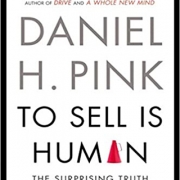Everyday Employee Experience at the Heart of Blogging
“Narrative gives us a sense of shared experience and humanity,” Hubert Joly (former CEO of Best Buy) writes in The Heart of Business. “Telling everyday stories – stories of employees, customers, communities, and how they impact each other’s lives – fosters a sense of purpose and connection..” For that very reason, thehartford.com explains, “Your employees need to understand your company, its values, its goals and its priorities.”Surveys show 72% of consumers report feeling closer to a company when employees share information about a brand online.
As I related in an August Say It For You blog post, when I’m working with a company to set up a business blogging strategy, encouraging that company’s employees to post blogs, quite often I hit a wall of resistance, with employees viewing blogging as just one more task to add to their work load. Should employees be required to write blog posts? Marcus Sheridon of SalesLion.com thinks so. Since one goal of content marketing is to produce as much content as possible, the more hands are put to the task, the better. With content that answers consumers’ questions so valuable, it stands toathat employees who deal with consumers every day should be the ones to write about it. Human nature being what it is, he says, if it’s not required, they won’t do it.
Sure, but after fifteen years of providing blog content writing services to dozens of different businesses and professional practices, I’ve come to the same conclusion as Stan Smith of pushingsocial.com: “Blogging is writing, and writing, for most people has a fear factor right up there with public speaking. You can coach, bribe, threaten all you want but in the end, you’ll be writing most of your blog posts.” That’s precisely why I found Joly’s account of how things worked at Best Buy so inspiring. At every meeting, people would tell their own personal stories and how they personally had been able to make a difference to someone.
At Say It for You, as our team provides content writing services to business owners and practitioners, one way we involve employees is to highlight specific accomplishments in a blog. That brings a two-way benefit: When readers learn about an employee’s enthusiasm and how that person put in extra time and effort in serving customers, that tends to cement the customer’s relationship with the company or practice. As featured employees proudly share those write-ups with friends and family, the blog becomes a gift that keeps on giving.
Far from being a contradiction to concept of authenticity, we help readers “meet” the actual team of employees who are providing the product or service, the ones whose daily activities result in the benefits customers enjoy.






Follow us online!